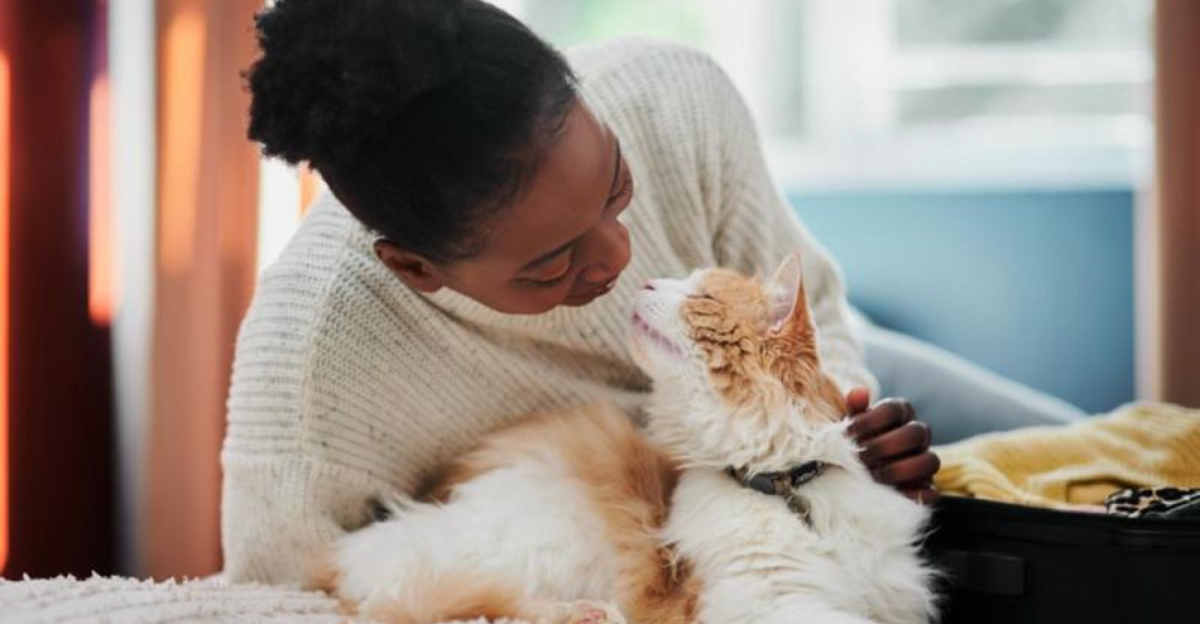📖 Table of Content:
From the moment they curl up in your lap for the first time, cats have a way of claiming our hearts with their soft purrs and quiet companionship.
Over time, they become part of our routines, our conversations, and our lives. And before we know it, we start to notice little changes—changes that remind us they’re not kittens anymore. As your cat gets older, they may still have bursts of playful energy, but you might notice them choosing cozy cushions over daring leaps. These small shifts are gentle reminders that they’re entering a new chapter of life—their senior years. While cats age more subtly than dogs, understanding this stage helps us care for them with the same love they’ve always given us.
Most cats are considered seniors around 10 years old, though some veterinarians begin adjusting care starting at age 7. That’s because aging can sneak in quietly—one skipped jump, one extra nap at a time. Being attuned to these signs can make a huge difference in spotting health issues early and helping your cat age with grace and comfort.
So what does it really mean to have a senior cat? It means it’s time to lean in a little closer, observe a little more carefully, and love a little more gently. With the right care and attention, these golden years can be just as joyful—and even more meaningful—than the ones before.
Signs of Aging in Cats
- Weight loss or unexpected weight gain
- Difficulty jumping or getting around
- Eating less or having trouble chewing
- Cloudy or declining vision, especially in low light
- Hearing loss or unresponsiveness to sounds
- Less frequent grooming or a messy coat
- Getting lost or confused in familiar spaces
- Missing the litter box or accidents in the house
- Increased hiding or changes in social behavior
Physical Changes and Health
Senior cats are more vulnerable to a range of health conditions, many of which can be managed with early detection and proper care. Dental disease is one of the most prevalent, affecting over 80% of cats past the age of 5. Arthritis, or osteoarthritis, becomes common in cats over 10, making everyday movements more painful.
Chronic illnesses also appear more frequently with age. Kidney disease affects about 1 in 5 cats and can lead to increased thirst and urination. Hyperthyroidism is another frequent issue, marked by weight loss and increased appetite. Some older cats may also face conditions like diabetes, cancer, or cognitive dysfunction, which is similar to dementia and affects up to 80% of cats over 15.
Knowing what to look for can help you respond early and effectively. If you notice symptoms like vomiting, changes in appetite, increased vocalization, or even just a general sense that “something’s off,” it’s always worth a trip to the vet.
Senior cats benefit greatly from early intervention and consistent monitoring.
Caring For Your Senior Furball
As your cat ages, comfort and accessibility become key. Older cats may find it difficult to go up and down stairs to find food or water, so keeping essentials on each floor can help. They may also appreciate softer, warmer resting spots—consider a heated cat bed for those chilly days. And don’t forget regular grooming sessions; a gentle brush can keep their coat healthy and be a sweet bonding moment, too.
Senior cats need more frequent checkups—ideally every six months. These visits usually include blood work, urine tests, and physical exams to monitor changes in kidney function, thyroid levels, and more. Since cats are excellent at hiding pain, these wellness checks are crucial for catching issues before they become serious.
At home, stay observant. Weigh your cat regularly, watch their litter box habits, and take note of any personality shifts. Small changes can signal big health news. You can even use a pet camera to keep tabs on their habits while you’re away—peace of mind for you, and safety for them.
Adjusting Home Environment for Comfort
Watching your cat grow older can stir up a mix of emotions—gratitude for the years shared, tenderness for their aging body, and a desire to make every moment count. But this stage of life is not just about slowing down. It’s about deepening the bond you’ve built, and cherishing the quiet moments even more.
Senior cats have a wisdom about them—a calmness that can teach us a lot about enjoying life’s simpler pleasures. A sunny spot on the floor, a gentle pet behind the ears, a soft purr in the middle of the night—these become the precious details of your life together.
By giving your aging cat the care they deserve, you’re returning the favor for all the joy and love they’ve brought into your world. These years can be filled with comfort, trust, and affection that grows stronger with time.
So lean in. Slow down. Let your senior cat remind you that the golden years aren’t the end—they’re a beautiful continuation of a life well loved.



